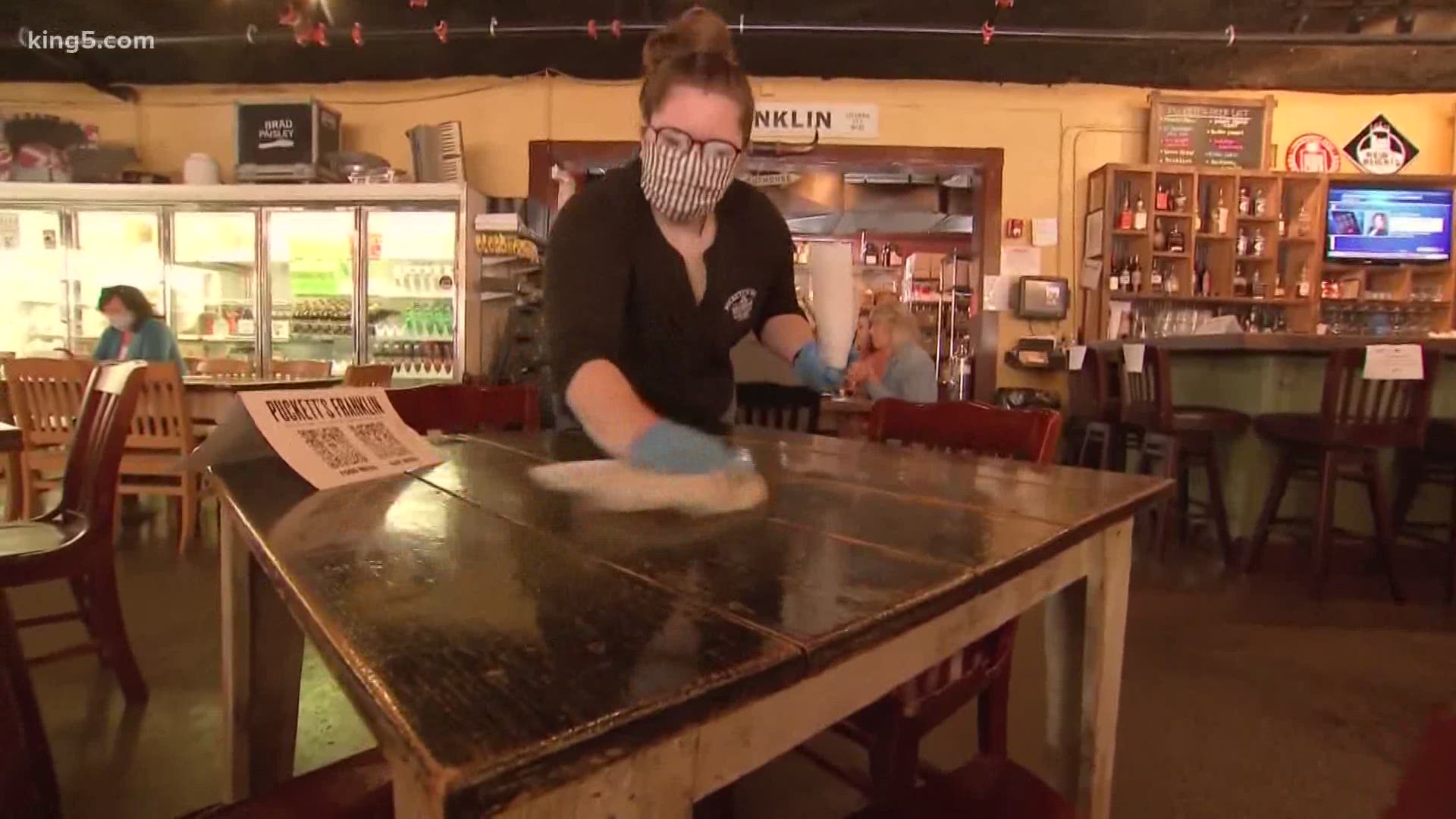SEATTLE — A study from the University of Washington School of Public Health took a nationwide look at the risk of exposure to the novel coronavirus (COVID-19) while at work.
The study found that as much as 10 percent, or 14.4 million American workers, could be exposed to the virus every week, and as many as 26.7 million workers could face that exposure once a month.
"I was curious, in the early days of COVID-19, to figure out how many workers should we be concerned about, and obviously, all workers are going to be disrupted during this time,” explained UW School of Public Health Assistant Professor Marissa Baker. “I wanted to look at some existing data sources to try to find out how many workers are already exposed to infection and disease on the job because that would be a good indicator of who might be most at risk for exposure during this COVID-19 pandemic.”
Professor Baker works specifically in the Department of Environmental and Occupational Health Sciences at the UW where she has been researching worker exposure rates for the last few years. She based her current findings on a paper she published in 2018 in the American Journal of Industrial Medicine.
The paper examined the workforce in what is called Federal Region 10 to evaluate their exposure to infections like MRSA and the flu. Federal Region 10 includes Alaska, Oregon, Idaho, and Washington state.
Professor Baker took those findings, combined with federal employment data, and found it is possible, due to social interaction, that 10 percent of American workers will be exposed to the virus weekly, and more than 18 percent of workers run the risk of exposure monthly.
It's no surprise that most workers who risk exposure include health care professionals, police officers, and other first responders - which highlights the importance of proper medical supplies like masks and gloves.
However, the study also highlights disparities in income and how that relates to worker infection. Only about 25 percent of the American workforce have jobs performed from home, and they are typically higher paid jobs where people that can afford to take unpaid leave. Therefore, the study recommends employers be more accommodating to employees who cannot work from home by offering extra sick and leave time to help prevent people from feeling forced to go into work when they are sick.
As a final note, Professor Baker believes her most recent study could even underestimate the risk of infection. Baker and her department continue to search for more information on who is the most vulnerable for infection.

